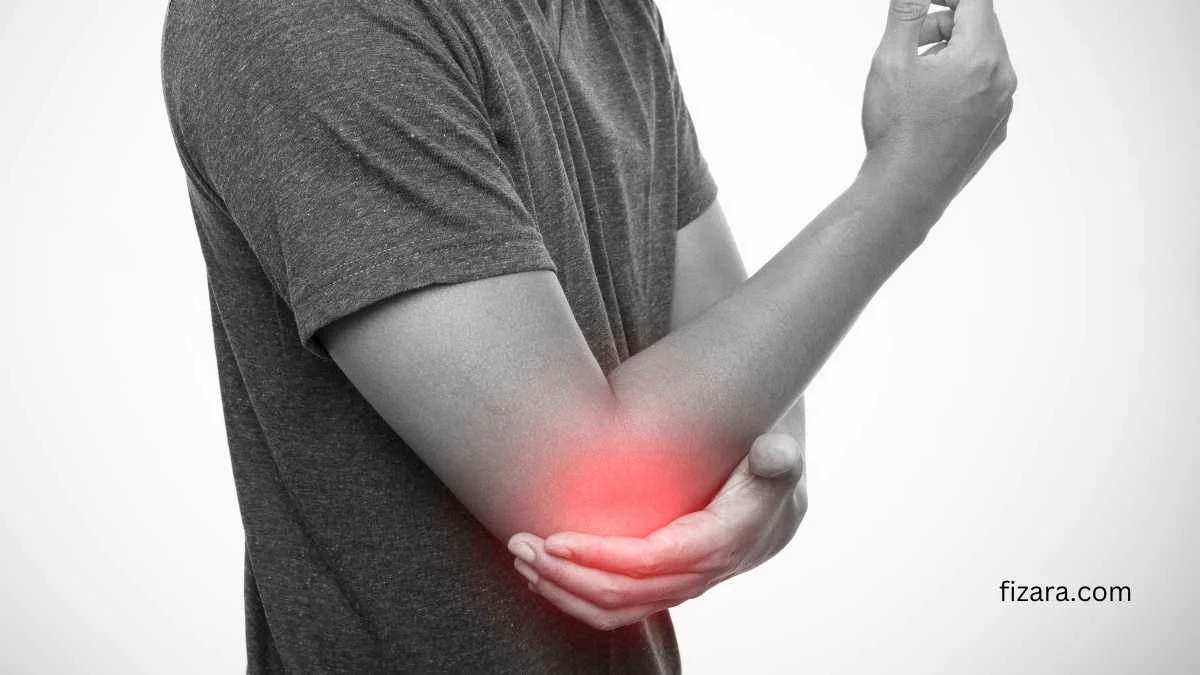Elbow pain can result from various causes. Here are the main ones:
- Tennis Elbow: This is a common condition caused by overusing the arm, particularly through repetitive motions. It leads to pain on the outside of the elbow.
- Golfer’s Elbow: Similar to tennis elbow, this condition affects the inside of the elbow and is also due to repetitive stress.
- Bursitis: This occurs when the bursae, small fluid-filled sacs that cushion the bones, become inflamed. It can result from prolonged pressure or injury.
- Arthritis: Both osteoarthritis and rheumatoid arthritis can affect the elbow, causing pain, swelling, and reduced mobility.
- Fractures and Dislocations: Injuries like falls or direct blows can fracture or dislocate the elbow, leading to severe pain and swelling.
- Nerve Compression: Conditions like cubital tunnel syndrome occur when a nerve is compressed or irritated, often causing tingling and pain.
Identifying the exact cause of elbow pain is important for effective treatment. If you’re experiencing elbow pain, seek professional medical advice. For reliable care and treatment, visit Foundation Pain & Spine PLLC. More information is available at https://foundationpainspine.com/.
How to identify the reason of elbow pain
Identifying the reason for elbow pain involves several steps. Here’s a simple guide:
- Assess the Pain’s Location: Determine where the pain is located. Pain on the outside of the elbow might indicate tennis elbow, while pain on the inside could suggest golfer’s elbow.
- Notice When It Happens: Pay attention to when the pain occurs. Pain that worsens with specific movements or activities, such as lifting or gripping, might point to a repetitive strain injury.
- Check for Other Symptoms: Look for additional symptoms like swelling, redness, or numbness. Swelling and tenderness might suggest bursitis or arthritis, while numbness or tingling could indicate nerve compression.
- Consider Recent Activities or Injuries: Think about any recent activities or injuries. If you’ve had a fall or direct blow to the elbow, it could be a fracture or dislocation. Repetitive motions in sports or work might suggest a strain injury.
- Review Medical History: Consider any existing health conditions. Arthritis or previous injuries could contribute to elbow pain.
If your elbow pain persists or is severe, seeking medical advice is important. A healthcare professional can perform physical exams and imaging tests to determine the cause.
How is elbow pain usually treated
Treating elbow pain depends on its cause, but here are common approaches:
- Rest and Activity Modification: Avoiding activities that strain the elbow can help reduce pain and allow healing. This might include taking breaks from repetitive motions.
- Pain Relief Medications: Over-the-counter pain relievers such as ibuprofen or acetaminophen can help reduce pain and inflammation. In some cases, doctors may prescribe stronger medications.
- Physical Therapy: Physical therapists can teach exercises to strengthen the muscles around the elbow and improve flexibility, which can help prevent future pain.
- Ice and Heat Therapy: Applying an ice pack can reduce swelling and numb the pain, while heat can relax and soothe tight muscles.
- Braces and Supports: Wearing a brace or support can help stabilize the elbow and reduce strain on the affected area.
- Injections: In some cases, corticosteroid injections can help reduce inflammation and pain in the elbow.
- Surgery: For severe cases, such as fractures or severe tendon damage, surgery might be necessary to repair the damage.
If elbow pain persists or worsens, it’s important to seek professional medical advice. For reliable care and treatment, visit Foundation Pain & Spine PLLC.
Foundation Pain & Spine PLLC
8390 Lyndon B Johnson Fwy Suite 500, Dallas, TX 75243, United States
(469) 214-5735









